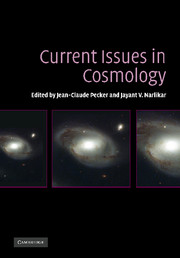Book contents
- Frontmatter
- Contents
- List of contributors
- Preface
- Part I Observational facts relating to discrete sources
- Part II Observational facts relating to background radiation
- Part III Standard cosmology
- Part IV Large-scale structure
- Part V Alternative cosmologies
- Part VI Evidence for anomalous redshifts
- Part VII Panel discussion
- 20 Panel discussion
- 21 General discussion
- 22 Concluding remarks
- Index
20 - Panel discussion
Published online by Cambridge University Press: 15 December 2009
- Frontmatter
- Contents
- List of contributors
- Preface
- Part I Observational facts relating to discrete sources
- Part II Observational facts relating to background radiation
- Part III Standard cosmology
- Part IV Large-scale structure
- Part V Alternative cosmologies
- Part VI Evidence for anomalous redshifts
- Part VII Panel discussion
- 20 Panel discussion
- 21 General discussion
- 22 Concluding remarks
- Index
Summary
We had a good discussion of various issues relating to cosmology and there has been a clear division of perceptions of what is considered important evidence. On the one side, the conventional one, we have heard the very detailed evidence of CMBR and high redshift supernovae, evidence that is popularized in the phrase “concordance cosmology.” The Universe according to this view went through an inflationary phase, had an era of nucleosynthesis and then had the surface of last scattering when the radiation background became decoupled from matter. The package comes with a large part of the matter energy (around 75%) being dark and hitherto unknown, a substantial part of strange kind of matter (21%) and only around 4% of ordinary matter that we are familiar with. Once you believe all of these ideas, you feel convinced that the cosmological problem is all but solved.
On the other side, some of us have been increasingly worried at what appears to be anomalous evidence, evidence that does not fit into the standard picture just mentioned. Even the very basic Hubble law applied to QSO redshifts seems to be threatened if one takes the evidence on anomalous redshifts seriously. In the 1970s when Chip Arp first started finding such examples, he was told that these were exceptions and that he should find more. He has been doing just that and his cases now include not just optical sources but also radio and X-ray sources. Then there is the evidence of periodicities of redshifts that has not gone away with larger samples. As I discussed, even the gamma ray burst sources appear to show the effect.
- Type
- Chapter
- Information
- Current Issues in Cosmology , pp. 237 - 247Publisher: Cambridge University PressPrint publication year: 2006



